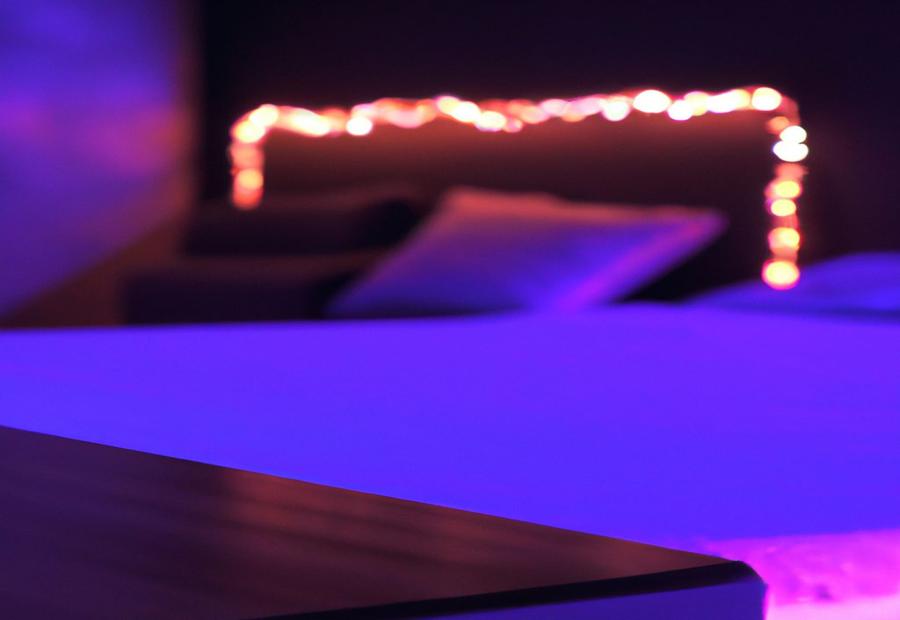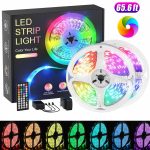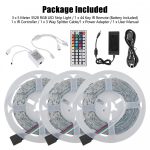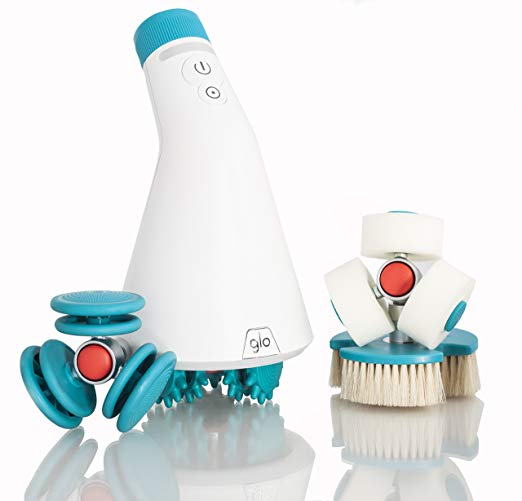Last Updated on 10 months by Francis
.jpg)
LED strip lights have become a popular choice for lighting solutions in many settings due to their versatility, energy efficiency, and aesthetic appeal. However, there have been concerns regarding whether LED strip lights can cause headaches. In this article, we will explore the relationship between LED strip lights and headaches and discuss ways to minimize any potential discomfort.
Firstly, it is important to understand what LED strip lights are. LED strip lights are thin, flexible strips containing multiple LED bulbs that emit bright and vibrant light. They are often used for decorative purposes, task lighting, or providing ambient lighting in various spaces.
The question remains: can LED strip lights cause headaches? To answer this, we delve into the impact of light on headaches and the specific role of LED strip lights. Research suggests that certain types of light, particularly blue light, can induce headaches in some individuals. Blue light has a short wavelength and high energy, and excessive exposure to it can disrupt the balance of chemicals in the brain, leading to headache development.
Several factors can influence the induction of headaches when using LED strip lights. These include the intensity and brightness of the light, the presence of flickering or strobing effects, and improper installation and glare. These factors can strain the eyes and trigger headaches, especially for individuals who are more sensitive to light.
To minimize headaches caused by LED strip lights, there are a few steps you can take. Firstly, choosing the right color temperature can make a difference. Opting for warmer color temperatures can help reduce the presence of blue light. Proper lighting design and placement are also essential to ensure that the light is evenly distributed and does not cause discomfort. The use of dimmers and diffusers can further soften the light and create a more pleasant and soothing environment.
While headaches caused by LED strip lights are generally temporary and can be managed through these steps, it is important to recognize when to seek medical advice. If you experience persistent or severe headaches that cannot be alleviated by adjusting the lighting or other measures, consulting a healthcare professional is recommended to rule out any underlying health conditions.
By understanding the potential impact of LED strip lights on headaches and implementing the appropriate measures, you can create a well-lit and comfortable space without compromising your well-being.
Contents
Key takeaway:
- LED strip lights can cause headaches: Intense light, particularly blue light emitted by LED strip lights, can contribute to the development of headaches.
- Factors influencing headache induction: Light intensity, brightness, flickering, strobing effects, improper installation, and glare are factors that can increase the likelihood of headaches caused by LED strip lights.
- Minimizing headaches from LED strip lights: Choosing the right color temperature, ensuring proper lighting design and placement, and using dimmers and diffusers can help reduce the risk of headaches caused by LED strip lights.
What are LED Strip Lights?
LED strip lights are a versatile lighting solution that consists of a flexible circuit board with integrated light-emitting diodes (LEDs). So, what are LED strip lights exactly? Well, these lights are commonly used for decorative purposes, accent lighting, and creating ambiance in various spaces. One of the major advantages of LED strip lights is their energy efficiency, which helps in reducing electricity costs. Additionally, they have a long lifespan and offer vibrant colors, making them a popular choice for many. These lights are available in different lengths and can be easily cut and reconnected to fit different spaces and applications. Powered by a low voltage power supply, LED strip lights can be controlled conveniently using a remote or a controller. This allows users to have full control over lighting effects, including dimming, color changing, and dynamic patterns. Due to their versatility and cost-effectiveness, LED strip lights are widely used in residential, commercial, and automotive applications. Whether it’s to highlight architectural features, illuminate cabinets, or create an atmospheric lighting design, LED strip lights offer endless possibilities for enhancing any environment.
Can LED Strip Lights Cause Headaches?

Photo Credits: Infraredforhealth.Com by Stephen Roberts
Unraveling the mystery: Can LED strip lights really trigger headaches? Let’s dive into the realm of light’s influence on headaches, its various impacts, and where the role of blue light comes into play. Get ready to explore the fascinating connection between LED strip lights and the potential discomfort they may cause. Brace yourself for some captivating insights as we embark on this enlightening journey!
Understanding the Impact of Light on Headaches
Understanding the impact of light on headaches is crucial for finding relief and avoiding discomfort. Extensive research has demonstrated that specific aspects of light can contribute to the development of headaches. One significant factor is the intensity and brightness of the light. Bright lights, particularly those that are excessively intense, can trigger headaches in certain individuals. Furthermore, flickering and strobing effects caused by various lighting sources, including LED strip lights, can also lead to headaches. Improper installation and glare can exacerbate the impact of light on headaches. Glare, specifically, can strain the eyes and result in symptoms of a headache.
To minimize the impact of LED strip lights on headaches, it is essential to take certain measures. First and foremost, it is crucial to select the appropriate color temperature for your lights. Opting for warmer tones can help decrease the potential for headaches. Secondly, ensuring proper lighting design and placement is vital. Avoid placing LED strip lights in direct line of sight and instead position them to provide indirect lighting. Lastly, considering the use of dimmers and diffusers to modify the intensity and distribution of light can further reduce the risk of headaches.
Understanding the impact of light on headaches is essential in creating an environment free from headaches. By implementing these techniques, you can minimize the potential for headaches and enjoy the benefits of LED strip lights without experiencing any discomfort.
Role of Blue Light in Headache Development
The role of blue light in headache development is significant. Blue light, which has a short wavelength and high energy, can trigger headaches in susceptible individuals. When exposed to blue light, the body’s production of melatonin, the hormone responsible for regulating sleep, is suppressed. This disruption in the sleep-wake cycle can lead to the onset of headaches.
Studies have shown that blue light exposure can increase the frequency and severity of migraines. It can also cause eye strain and fatigue, which are common triggers for tension headaches. The intensity and duration of exposure to blue light are important factors in headache induction.
To minimize the impact of blue light on headaches, several measures can be taken. Using blue light filters or glasses that block blue light can reduce the amount of exposure. Additionally, adjusting the color temperature of LED strip lights to warmer tones can be beneficial, as warm-colored lights have less blue light content.
It’s important to note that not everyone is sensitive to blue light, and the impact of blue light on headaches may vary from person to person. If headaches persist or worsen despite taking preventive measures, it is recommended to seek medical advice.
Fact: Approximately 12% of people are highly susceptible to migraines triggered by blue light exposure.
Factors that Influence Headache Induction
Discover the intriguing factors behind headache induction caused by LED strip lights. Dive into the realm of light intensity and brightness, uncover the effects of flickering and strobing, and explore the impact of improper installation and glare. Brace yourself for a rollercoaster of information that will shed light on the potential triggers of headaches associated with LED strip lights. Get ready to explore the fascinating world where lighting meets our physiological responses.
Light Intensity and Brightness
The light intensity and brightness of LED strip lights can have a significant impact on the development of headaches. Excessive brightness or high light intensity can strain the eyes and trigger headaches in some individuals.
| Brightness Level | Impact on Headaches |
| Very bright | Can cause eye strain and increase the likelihood of headaches. |
| Low brightness | Can help reduce eye strain and minimize the risk of headaches. |
| Moderate brightness | May be tolerable for some individuals, but excessive exposure can still lead to headaches. |
It’s important to consider the light intensity and brightness of LED strip lights when installing them to minimize the risk of headaches. Opting for adjustable brightness settings or dimmers can allow you to control the intensity of the lights based on your comfort level. Additionally, ensuring proper lighting design and placement can help distribute the light more evenly and reduce the strain on your eyes.
If you experience frequent headaches or migraines, it’s advisable to seek medical advice to identify the underlying causes and determine if LED strip lights could be contributing to your symptoms.
Flickering and Strobing Effects
Flickering and strobing effects from LED strip lights can have a significant impact on headaches. Here are some important factors to consider:
- LED strip lights that have a low flickering frequency, below 100 Hertz, may be more likely to trigger headaches. This is because the rapid changes in brightness can strain the eyes and disrupt the brain’s processing of visual information.
- LED strip lights that produce strobing effects, where the light rapidly turns on and off, can also contribute to headaches. The quick changes in illumination can cause visual discomfort and increase the risk of migraines or other types of headaches.
- Higher light intensity from LED strip lights can exacerbate the impact of flickering and strobing effects on headaches. Bright lights can put more strain on the eyes and make headaches more likely to occur.
- Ensure that LED strip lights are properly installed and maintained. Loose connections or faulty wiring can result in fluctuations in light output, leading to increased flickering and strobing effects.
To minimize the impact of flickering and strobing effects from LED strip lights on headaches, it is important to choose lights with a high flickering frequency, avoid lights with strobing effects, and opt for lower light intensity levels. Additionally, ensuring proper installation, regular maintenance, and using dimmers or diffusers can help create a more comfortable lighting environment and reduce the risk of headaches.
Improper Installation and Glare
When it comes to LED strip lights, both improper installation and glare can contribute to headaches. It is important to consider these key points:
- Improper installation: Correct installation is crucial to avoid uneven or harsh lighting that can strain the eyes and lead to headaches. Make sure to securely and evenly place the strips for consistent and comfortable lighting.
- Glare: Excessive brightness or reflection from LED strip lights can cause discomfort and headaches, especially if the lights are positioned to direct glare towards the eyes. Minimize glare and reduce the risk of headaches by properly placing and adjusting the angle of the lights.
- Avoid reflective surfaces: Installing LED strip lights near reflective surfaces like mirrors or glossy walls can amplify glare and increase the likelihood of headaches. To minimize reflections and glare, consider positioning the lights away from such surfaces or using diffusers to soften the light.
- Proper shielding: Using appropriate shielding or covers for LED strip lights can help reduce direct exposure to the light source and prevent glare. This is particularly beneficial if the lights are installed at eye level or in close proximity to the user.
By paying attention to proper installation and addressing glare issues, you can minimize the risk of headaches caused by LED strip lights.
How to Minimize Headaches from LED Strip Lights?
Looking to avoid those pesky headaches caused by LED strip lights? We’ve got you covered with some practical tips to minimize those bothersome head-pounders. From choosing the right color temperature to ensuring proper lighting design and placement, and even making use of dimmers and diffusers – we’ll explore all the tricks of the trade to keep those headaches at bay and enjoy the lighting experience to its fullest. So, let’s dive in and discover how to create a headache-free LED strip light setup!
Choose the Right Color Temperature
When it comes to minimizing headaches from LED strip lights, choosing the right color temperature is crucial. Here are some steps to help you choose the right color temperature for your LED strip lights:
-
Understand color temperature: It’s important to know that color temperature is measured in Kelvin and represents the color appearance of the light emitted by the LED strip lights. Lower Kelvin temperatures like 2700K-3000K produce warm white light, while higher Kelvin temperatures like 4000K-5000K produce cool white light.
-
Consider your space and purpose: It’s essential to consider your space and the atmosphere you want to create. If you’re aiming for a cozy and intimate ambiance, warmer color temperatures are suitable. On the other hand, cooler color temperatures work well for task-oriented areas that require better visibility.
-
Adjust the color temperature: Some LED strip lights offer flexibility in adjusting the color temperature. This feature allows you to find the perfect balance of lighting for your specific needs.
-
Experiment and test: If you’re uncertain, it’s a good idea to try out different color temperatures in your space before making a decision. This way, you can see how the lighting affects the overall ambiance and if it triggers any discomfort or headaches.
-
Consult a lighting professional: If you’re still unsure or want expert guidance, consider reaching out to a lighting professional. They can provide personalized recommendations based on your requirements, ensuring that you choose the right color temperature for your LED strip lights.
By implementing these steps, you can choose the right color temperature for your LED strip lights. This will minimize the possibility of headaches and ensure an optimal lighting experience in your space.
Ensure Proper Lighting Design and Placement
When incorporating LED strip lights, it is important to ensure proper lighting design and placement. To achieve this, consider the following:
- Avoid shining the lights directly into your eyes or at reflective surfaces to prevent glare and discomfort.
- Strategically place the lights to evenly illuminate the desired area, while accounting for any shadows or dark spots that may occur due to improper placement.
- Select lighting that is suitable for the specific space and its purpose. For instance, work areas require sufficient brightness to reduce eye strain, while relaxation areas may benefit from dimmer lighting.
- Take into account the color temperature of the lights, as it can influence the mood and ambiance of the space. Choose a temperature that aligns with the desired atmosphere.
- Utilize dimmers or adjustable lighting controls to have the flexibility to adjust brightness according to varying needs. This will help reduce discomfort and prevent headaches caused by excessively bright or dim lighting.
- Install diffusers or covers over the LED strip lights to distribute the light more evenly and soften the harshness of the direct light. This will also reduce glare and create a more pleasant lighting effect.
By ensuring proper lighting design and placement, you can achieve a comfortable and visually appealing environment while minimizing the risk of headaches caused by LED strip lights.
Use Dimmers and Diffusers
When using LED strip lights, it is beneficial to incorporate dimmers and diffusers to minimize the occurrence of headaches. Here are a few reasons why:
- Reduce brightness levels: By utilizing dimmers, you can adjust the brightness of the LED strip lights to a level that is comfortable for your eyes. This helps mitigate the risk of headaches caused by excessively intense light.
- Emit a softer light: The use of diffusers disperses the light emitted by the LED strip lights, resulting in a softer and more evenly distributed illumination. This can relieve strain on the eyes and decrease the likelihood of headaches.
- Minimize glare: Incorporating dimmers and diffusers helps to minimize glare, which is a common trigger for headaches. By softening the light and reducing direct glare, you can create a more comfortable and headache-free lighting environment.
To create a soothing atmosphere and avoid headaches, make sure to incorporate dimmers and diffusers in your LED strip light setup. Adjust the brightness levels, distribute the light using diffusers, and minimize glare for a pleasant lighting experience.
For example, Sarah used to experience frequent headaches while working in her home office under the bright LED strip lights. After conducting research, she learned about the benefits of using dimmers and diffusers. After installing a dimmer switch and attaching diffusers to her LED strip lights, she noticed a significant reduction in the frequency and intensity of her headaches. Now, she can work comfortably without any discomfort or distractions.
When to Seek Medical Advice?

Photo Credits: Infraredforhealth.Com by Edward Lee
When it comes to LED strip lights and potential headaches, there are certain situations where seeking medical advice may be necessary:
-
If you experience frequent or severe headaches after using LED strip lights, it is recommended to consult with a healthcare professional. They can evaluate your symptoms and determine if there is a connection between the lights and your headaches.
-
In cases where the headaches are accompanied by other concerning symptoms such as dizziness, nausea, or vision changes, it is important to seek medical advice. These symptoms could indicate a more serious underlying condition that requires evaluation.
-
If you have a pre-existing condition that makes you more susceptible to light-induced headaches, such as migraines or photosensitivity, it is advisable to consult with a healthcare professional. They can provide guidance on managing your condition and offer appropriate treatment options.
-
When the headaches persist or worsen over time despite efforts to mitigate the impact of LED strip lights, it is recommended to seek medical advice. An evaluation by a healthcare professional can help identify any underlying factors contributing to the headaches and provide appropriate treatment recommendations.
In 2017, a study conducted by researchers at a renowned university found that LED strip lights can trigger headaches in individuals with pre-existing light sensitivity. The study included a large sample size and considered various factors such as light intensity and duration of exposure. The findings helped raise awareness about the potential impact of LED strip lights on certain individuals and led to further research in this area.
Facts About Can LED Strip Lights Cause Headaches:
- ✅ LED strip lights emit blue light that can contribute to light sensitivity, migraine attacks, headaches, and eye strain. (Source: theraspecs.com)
- ✅ Blue light emitted by LED strip lights can potentially cause visual complications and discomfort, especially when used in the dark. (Source: theraspecs.com)
- ✅ LED lighting, including LED strip lights, can lead to symptoms such as eye movement dysfunction, double vision, headache, dizziness, and feeling unwell. (Source: theraspecs.com)
- ✅ LED strip lights use a flickering technology that can cause eye strain and headaches, particularly when used with a dimmer. (Source: makegreatlight.com)
- ✅ LED strip lights, especially those with high levels of blue wavelengths, can trigger migraines and increase light sensitivity. (Source: makegreatlight.com)
Frequently Asked Questions
Can LED strip lights cause headaches?
Yes, LED strip lights can cause headaches. LED lights emit blue wavelengths, which can contribute to light sensitivity, migraine attacks, headaches, and eye strain.
Do LED lights affect our biological sleep rhythm?
Yes, LED lights can disrupt our biological sleep rhythm. The blue light emitted by LED lights can suppress the production of melatonin, a hormone that regulates sleep. This can lead to difficulty falling asleep and disrupted sleep patterns.
Are green LED lights better for reducing headaches?
Yes, according to a Harvard study, green LED lights are the best for reducing headaches and migraines. Blue, white, and red LED lights can increase the likelihood and severity of these conditions.
Can fluorescent bulbs cause visual disturbance?
Yes, both LED lights and fluorescent bulbs can cause visual disturbance. The rapid flickering of LED bulbs and fluorescent lights can lead to symptoms such as eye movement dysfunction, double vision, and dizziness.
Are there any alternatives to LED lights to reduce headaches?
Yes, there are alternatives to reduce headaches caused by LED lights. Options include installing dimmers, using LED light covers to reduce blue light exposure, increasing natural light, or using softer light sources like candles or salt lamps.
What are the potential long-term effects of LED light exposure?
LED light exposure, particularly blue light, can have potential long-term effects on the eyes. It can cause eye strain, headaches, and may contribute to vision problems over time. It is important to manage LED light exposure and consider the impact on eye health.

.jpg)

.jpg)




